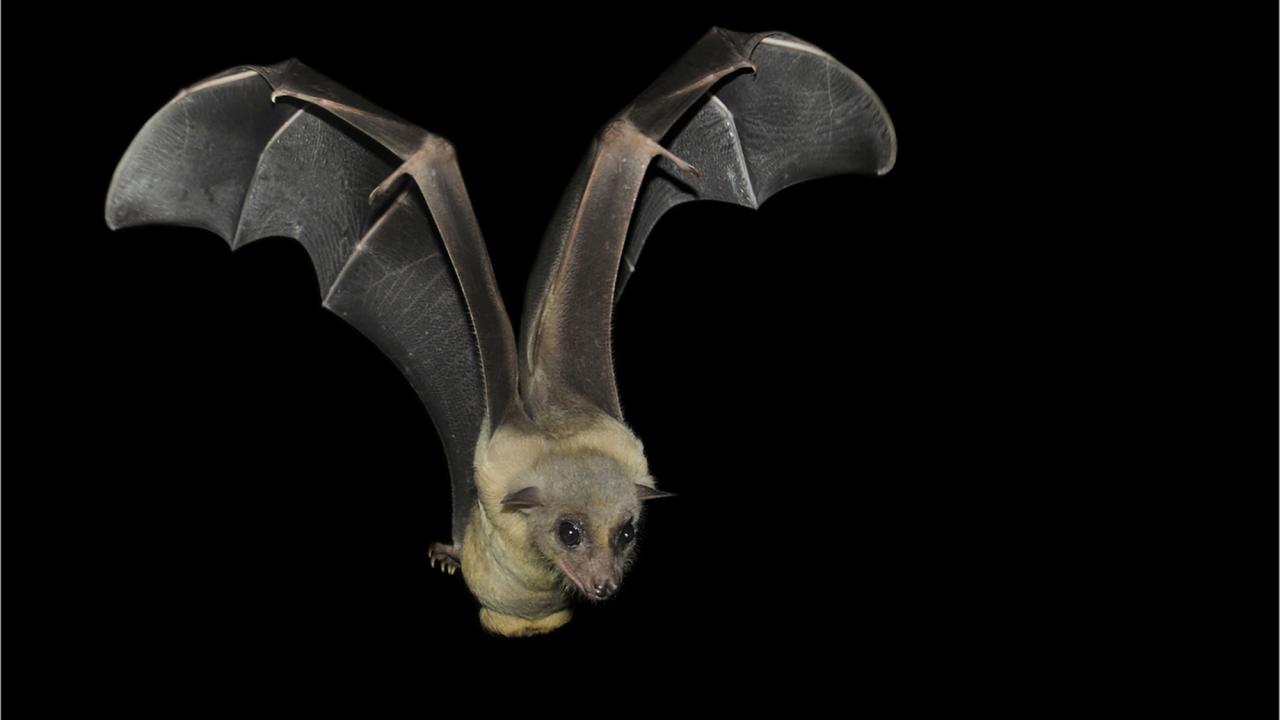New Research by Krubitzer Lab Finds Bat Brains are Organized for Echolocation and Flight


Distinguished Professor of Psychology
Center for Neuroscience
A new study shows how the brains of Egyptian fruit bats are highly specialized for echolocation and flight, with motor areas of the cerebral cortex that are dedicated to sonar production and wing control. The work by researchers at the University of California, Davis, and UC Berkeley was published May 25 in Current Biology.
Professor Leah Krubitzer’s lab at the UC Davis Center for Neuroscience studies how evolution produces variation in brain organization across a wide variety of mammals, including opossums, tree shrews, rodents and primates. This comparative neurobiology approach shows how both evolution and development influence brain organization.
Although bats represent a quarter of all living mammalian species, this is the first time the full motor cortex of any bat has been mapped, said first author Andrew C. Halley, Ph.D., a postdoctoral researcher in Krubitzer’s lab.
The researchers used electrodes to stimulate different areas of the motor cortex in anesthetized bats to determine muscle and limb movements produced from stimulation. While classic theories of motor cortex organization assume individual muscles are represented in motor cortex, the new study found evidence for complex movements across diverse body regions.
“What we have found instead is that brain areas represent common synergies of muscles, rather than individual muscles,” Krubitzer said.

Postdoctoral Researcher
Krubitzer Lab
Center for Neuroscience
The Egyptian fruit bat (Rousettus aegyptiacus) is unusual among bats because it echolocates using its tongue, rather than its larynx (the latter being the method used by most echolocating bats). Egyptian fruit bats are known to have precise motor control of their tongue and are able to aim sonar beams in different directions simply by manipulating their tongues within their mouths, without moving their heads.
Correspondingly, the animal’s motor cortex has an unusually large region that represents movements of the tongue, Halley said. More than 40% of the sensory and motor cortex that was stimulated produced tongue movements — far more than in other species that have been studied, such as primates and rodents.
This study is part of a larger comparative project in Krubitzer’s laboratory that has shown motor regions of the brain are organized according to differences in their bodies and behaviors. “If you look at a rhesus macaque, a huge amount of the cortex is devoted to gripping,” Krubitzer said. Similarly, in humans, the hands are heavily represented.
Coordinating forelimbs and hindlimbs for flight
A bat’s wing is composed of membranes that spread across the “fingers” of its forelimb and back to its hindlimb and tail. Movement of any of these body parts can affect the shape of the wing and change the path of flight. The researchers found that few areas of motor cortex represented forelimb movement alone. Instead, the vast majority of cortex represented synergistic shoulder and hindlimb movements. This reflects the fact that when these bats fly, the power for wing movement comes from shoulder muscles, while the fine adjustments needed for flying come from coordinated movements of shoulder and hindlimb muscles.
While forelimb movements were usually coupled with those of the hindlimb, other areas of cortex did produce movements of the hindlimb muscles alone. These are likely involved in the bats’ locomotor behaviors, “walking” around in trees by gripping branches with their hindlimbs.
Looking at brain organization in a wide variety of mammals helps us better understand our own brains, Krubitzer said.
“When we can look across species, it becomes a really powerful approach for making extrapolations to the human condition,” she said.
Additional co-authors on the study are: Mary Baldwin, Mackenzie Englund and Carlos Pineda at UC Davis; Dylan Cooke, Simon Fraser University, Canada; Tobias Schmid and Michael Yartsev, UC Berkeley. The work was partly supported by grants from the McDonnell Foundation and the National Institutes of Health, among others.
Media Resources
Read the paper (Current Biology)
Media Contacts:
- Andrew Halley, Center for Neuroscience, achalley@ucdavis.edu
- Leah Krubitzer, Center for Neuroscience, lakrubitzer@ucdavis.edu
- Andy Fell, News and Media Relations, 530-304-8888, ahfell@ucdavis.edu
A version of this article was originally posted on UC Davis News.
